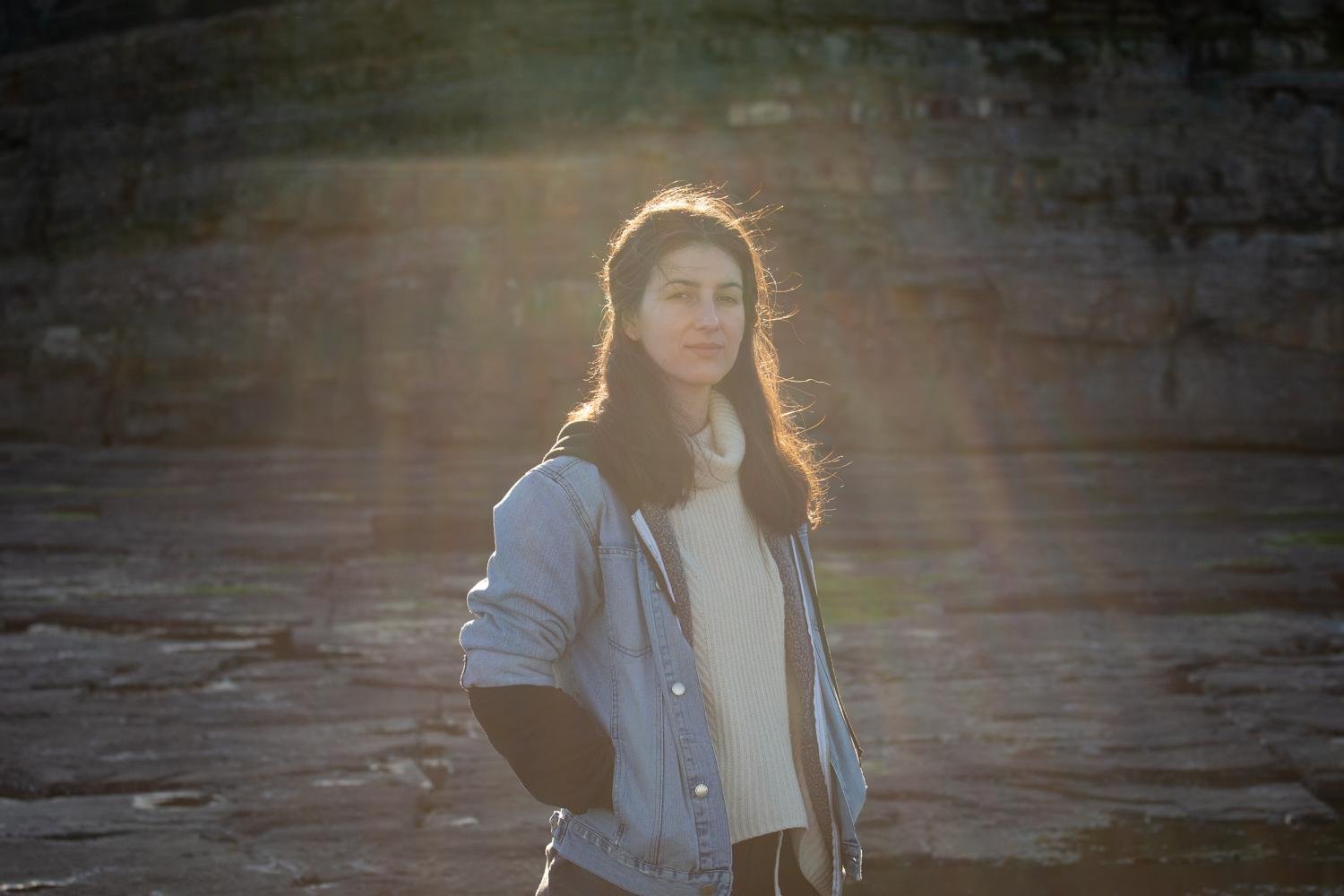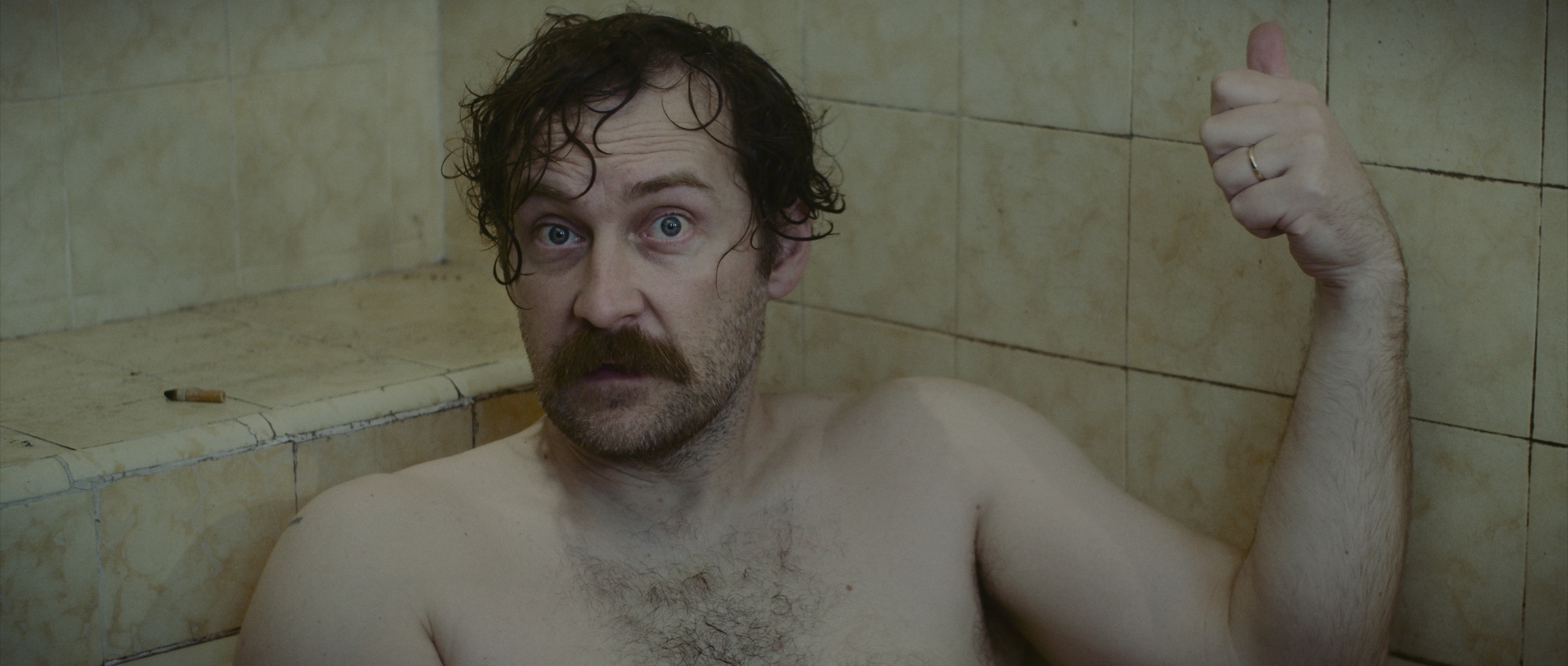Invocation Trilogy – A Conversation on Monumentality, Language, and the Past with Miška Mandić and Kuba Dorabialski
Kuba Dorabialski’s film series Invocation Trilogy stitches together an unlikely constellation of encounters and mythologies centered around the Eastern European Socialist project. Narrated in a fictional Slavic language invented by Dorabialski, the trilogy plays with truth, fabrication, and legibility as it unpacks histories and memories of Eastern Europe from the insider/outsider migrant perspective. In this interview, artist and filmmaker Miška Mandić speaks with Dorabialski about this work and his practice.
Miška Mandić: The Invocation Trilogy is a series of three video works made between 2017 and 2021, each with a bigger scope than the last. Rather than a sense of narrative progression across the works, it is the themes and images of political hope, history, mythology and language that resonate. How did you design the trajectory from one film to the next, and what is the sinew that holds all three together?
Kuba Dorabialski: The title of the series alludes to the works’ central conceit: that a series of magical manoeuvres and carefully negotiated coincidences cumulatively result in the invocation and resurrection of Lenin. The first video of the trilogy came about at a time when I had been reading about Andrey Sinyavsky, the Soviet writer, critic, and dissident. In 1966 he published some works that got him into trouble, and the trial transcripts are quite absurd and interesting. They tease out the nature of what it is to be an artist and what it is to write and what it is to dissent… And what Marxism is. Wonderful little circles of defining what the state is supposed to do, what the artist is supposed to do, what a dissident is, what a dissident can and can’t do in a dissident state… I thought, this is a great starting point for something and as I started working on it, I realized it was probably going to be a bigger project, in three parts.

Kuba Dorabialski, Excerpt from Invocation Trilogy 3: Connection of the Sticks, 2021. 4K video, 82min.
The three videos use the language of narrative cinema but they aren’t exactly “movies.” There are drone shots, and orchestral music and special effects and all these sorts of staples of cinema-craft, but they feel more at home in the art gallery than the cinema. They are video art/narrative cinema hybrids. All three videos explore disparate topics such as magic and spirituality and faith and history and monuments. There are sequences in which I analyse the intimate details of Warsaw Pact leaders, the long tradition of aviation sabotage by revolutionary witches, attempts to reanimate the skeletons of the Romanovs, singing forests in Central Russia, and so on. But the central sinew of the trilogy is nothing less than Eastern European socialism in the 20th century. As you can imagine, this is an immense category. As I approached each video, I was conscious of holding up this big and hotly debated subject to a particular art audience that has a series of closed presumptions about what Eastern European socialism was, and how it is to be interpreted in art works.
The first video, Floor Dance of Lenin’s Resurrection, goes in with a slightly critical eye on Eastern European socialism, looking directly at the things the West loves to hold up as emblematic of the flaws of a particular socialist experiment, but then not necessarily drawing the same conclusions that the Western perspective often does. The second video re-examines the Warsaw Pact: that kind of post-war, post-Stalin era of Eastern Europe. Finally, the third video (Connection of the Sticks) takes a much wider scope, and looks at the Eastern European socialist experiment as something that could be explained as a spiritual or religious phenomena. So the flow line can be read as a process of moving from scepticism through to a rejuvenation of genuine faith, both in a spiritual and political sense.
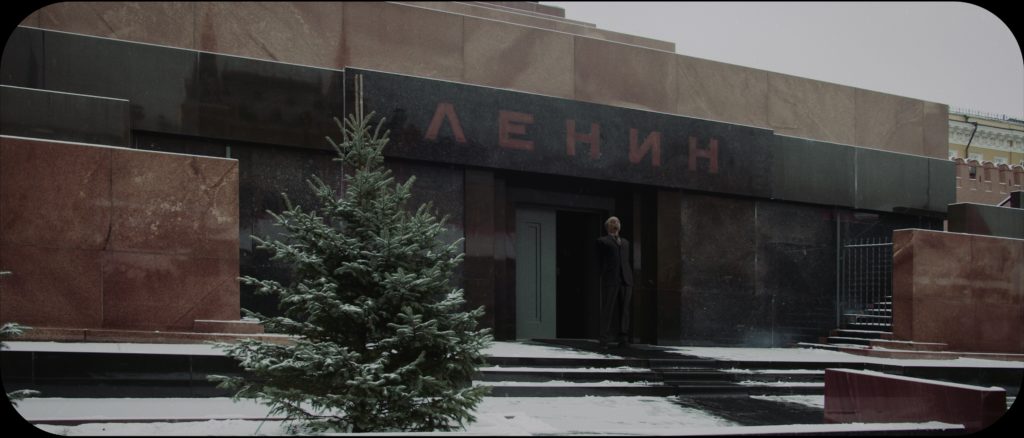
Kuba Dorabialski, Excerpt from Invocation Trilogy 3: Connection of the Sticks, 2021. 4K video, 82min.
MM: What are some of the monuments and buildings we see throughout the trilogy, and what drew you to those particular places? What does filmmaking bring to the sense of monumentality of a subject?
KD: Most obviously there’s a central section of the third video that revolves around the various “traditional” forms of Lenin monument. It’s a compendium of sorts, listing Lenins with hands behind back, Lenins with ushanka, Lenins with left hand raised, right hand clutching papers, and so on. There’s also Lenin’s mausoleum, which is ultimately the site of his resurrection.
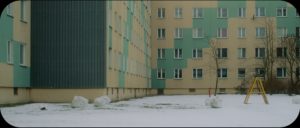
Kuba Dorabialski, Excerpt from Invocation Trilogy 3: Connection of the Sticks, 2021. 4K video, 82min.
But the process of monumentalization is more indirect and often more aggressive than a concrete statue on a pedestal; the trilogy looks at its world through a mythologizing and apotheosizing lens, and through such a lens everything takes on the hue of a monument. The concrete panel buildings of the 1960s and 70s are monuments to proletarian life. Pine forests are monuments to the Eastern European idea of wilderness. Cigarettes are monuments to time. Dance is a monument to the irrational. And all these monuments together, juxtaposed in a particular way, are one big grand monument to Eastern Europe between 1917 and 1991.
I think that the distinction between what is and isn’t a monument is inherently linked to its context and perceived audience. I suspect that if I was operating in Eastern Europe rather than Australia, these topics or the monuments, the buildings, the statues, the sculptures, but also the themes, wouldn’t take on quite the same level of monumentalism. I think they necessarily have to be filmed by someone that’s a little bit removed or even substantially removed by geography and time. I’ve never had success showing these video works in Eastern Europe. There were conversations about it being shown at the Australian Embassy in Moscow at one point, and someone from the Department of Foreign Affairs and Trading said, “Listen, tensions are a little bit high, it just wouldn’t look good if the Australian Embassy was looking at the Communist past of Russia…” So, I think that within the region, this past doesn’t currentlyhold the same significance that it does elsewhere, which makes me wonder: am I culturally appropriating by looking at this region that’s outside of where I live and where I’m based? Am I mining it for value for a non-Eastern European audience? And perhaps I am.
MM: Do you consider yourself a migrant? Perhaps that has something to do with it. If so, do you think your migrant-ness impacts your line of inquiry, your relationship with the histories that you’re exploring?
KD: It’s funny; I’ve been in Australia for 40 years—it’s basically my whole life that I’ve lived here.
I do consider myself a migrant. And much to my chagrin I also absolutely consider myself Polish and amazingly, even my kids think of themselves as Polish. Of course part of it is a performance—but then, what isn’t performance? Gender is a performance, language is a performance, everything is a conscious or even a subconscious decision to identify with something.
Additionally, my parents never truly adopted English. We always spoke Polish at home, and that determined my relationship with the outside ‘Anglo’ world. At some point in my childhood that ambiguous identity was formed, and you kind of hold on to that for your whole life.
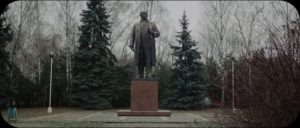
Kuba Dorabialski, Excerpt from Invocation Trilogy 3: Connection of the Sticks, 2021. 4K video, 82min.
MM: How much of the trilogy is based on official archives versus unofficial folklore, and what do you think is the difference between official and unofficial histories?
KD: Very little is based on official histories, but not much is based on folklore histories either. A lot of it comes from histories that have been reworked, or outright fabricated. Some elements are based on actual things… For example, in the third video, Connection of the Sticks, there is a scene in which a ski jumper is hit by lightning mid-flight. I wanted to deal with lightning because of Perun, the god of thunder so central to Slavic mythology. I wanted him to have an appearance in a late Soviet context. I like the idea of taking received history, and just twisting an element or adding a little too much of something, or strangling off a little bit of something else—making it feel just familiar enough to kind of go with it but not be a hundred percent sure that what you’re hearing is truth with a capital T.
MM: That’s similar to the language that you’ve invented: “Shni shni,” a pan-Slavic ficto-language that feels at once strange and familiar to all Slavic speakers. What openings do you think that kind of partial legibility, partial illegibility — of both language and of truth — creates?
KD: All three videos in the trilogy are mostly spoken and narrated in this fictional language that I’ve been developing for over a decade. It’s part Polish, Russian, and Ukrainian, and has many sonic elements taken from Serbo-Croat, Bulgarian, and other Slavic languages as well. In this trilogy, this language allowed me to step back far enough to survey Slavic Eastern Europe from above, without being too tied to any particular nationality. Secondarily, I enjoy the experience of coming across a language I don’t speak and being compelled to identify it. Sometimes you know instantly, sometimes it takes you a couple of guesses, but that deciphering process, that moment of uncertainty is quite deliciously destabilizing, especially when it’s a familiar language group. There is also an element of trying to simultaneously speak multiple conversations to different audiences. I speak Polish and quite basic Russian, but I’ve traveled quite extensively through various Slavic countries and I listen to languages not as a linguist, but as an actor; I look for motifs and themes and flourishes for imitation, and I litter these elements through my fictional language. Then within the videos I try to insert these little elements — certain linguistic structures — in the hope that Slavic speakers will hear it and decide “Oh, I think he is speaking Russian” only to subvert that confidence in the next sentence.
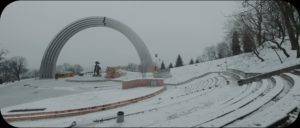
Kuba Dorabialski, Excerpt from Invocation Trilogy 3: Connection of the Sticks, 2021. 4K video, 82min.
There’s an amusing dynamic that I’ve observed playing this work for Slavic speaking audiences. The first time I played the trilogy, at the gallery opening, I had a Polish person come up to me and pityingly say, “Congratulations, lovely video. But I’m afraid I don’t understand your Polish.” And then at the end of the evening, an older Russian woman approached me and announced, “Your Russian is terrible!”
MM: Is that sense of confusion something that you’re actively working with?
KD: Yes, I like that moment of uncertainty and it puts a question mark on everything else in that film. As soon as you suspect that the language isn’t real, then suddenly you begin to question everything. The historical facts become suspect, the stories begin to sound made-up, and suddenly, you’re not really sure where you can stand. The temptation becomes either to dismiss everything else as fabrication, or else to accept everything as true, but it’s never really either of those extremes.
MM: But then you bring in the layer of the English subtitles, which clarify, and add the omnipotent narrator aspect, so some of that confusion and misdirection you mention becomes a factor only for Slavic-speaking audiences. What purpose do the subtitles then serve?
KD: I guess I’m aware of the context, and very aware that in Australia an artist doesn’t have much of an audience outside of Australia. So I make the work for an Australian audience, but when I’m making my master copies I always export a version without subtitles in the event that someday it’ll be shown somewhere where it can be given other language subtitles. And it’s worth noting that when I write it, I write the dialogue initially in English and then translate it into my fictional language.
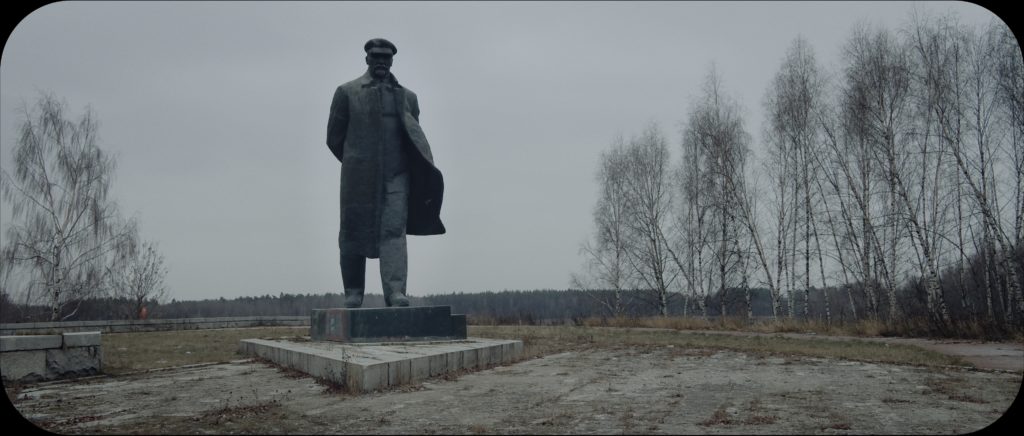
Kuba Dorabialski, Excerpt from Invocation Trilogy 3: Connection of the Sticks, 2021. 4K video, 82min.
MM: Going deeper into this Australian context: monuments in the settler-colonial context of Australia tend to celebrate British imperial conquests, ignoring the inherent violence and brutality of those histories, and in the process project a very narrow view of who the audiences of Australian public spaces are. How do you relate to monuments on Gadigal land (Sydney)?

Kuba Dorabialski, Excerpt from Invocation Trilogy 3: Connection of the Sticks, 2021. 4K video, 82min.
KD: That’s a whole different question when we’re talking about imperialism and colonised land and the monuments in Australia… Throughout Eastern Europe in the late 80s and the 90s, so many monuments came down and all these theme parks popped up—there’s one in Lithuania and one outside Budapest, and another in Sofia—where all these monuments were banished to parks where tourists visit. They’re justified as memorials to horrible things, and you’re supposed to learn lessons from them and never let them happen again. But once you get to the cafe or the gift shop it becomes very clear that it’s largely celebratory nostalgia disguised as historical object lesson; those monuments are monuments to a peoples’ history. Foreign and domestic tourists leave with fridge magnets of Stalin or Dimitrov or whatever. But nevertheless, the base structures in these places have changed. Economic models have changed. Means of production have changed. For better or worse, the collapse of these systems actually echo in the toppled monuments.
But I think those same living politics in the context of Australia are fundamentally different. For example, take the statue of Cook—the British naval captain and colonialist who surveyed the East coast of Australia in the 1770s—in Hyde Park in Sydney. It’s a figure from the past, but that figure presides over something that remains unchanged. If that statue were to come down, would this be the end of imperialism in Australia? On the one hand, my relationship to Australian imperialist monuments is that they should be brought down. But then on the other hand how do we symbolically remember that imperialism still remains? I think the toppling of statues that is currently happening around the world is often seen as the performative tipping point of structural political change, but I think more than anything, particularly with toppling monuments to Columbus or Churchill, where there isn’t an actual structural political shift happening, they are acts of collective catharsis. And I don’t think that’s something to underplay, or to dismiss either. It’s an important process. But we mustn’t confuse this for political progress or change. These are decorative changes that can be retracted at any second.
But when we talk of toppling monuments, we think of this process of the symbolic crystallization of a political shift. What does it mean when we topple a monument, and no such fundamental political shift has occurred? When a system suddenly permits the toppling of a monument, is it acknowledging a break from the past, or is it sanitizing its image to allow it to continue a little longer?
This interview was conducted in person in October 2021. It has been edited for length and clarity.
This article is part of the Special Issue Contemporary Approaches to Monuments in Central and Eastern Europe. You can find links to the other articles in the special issue below:

